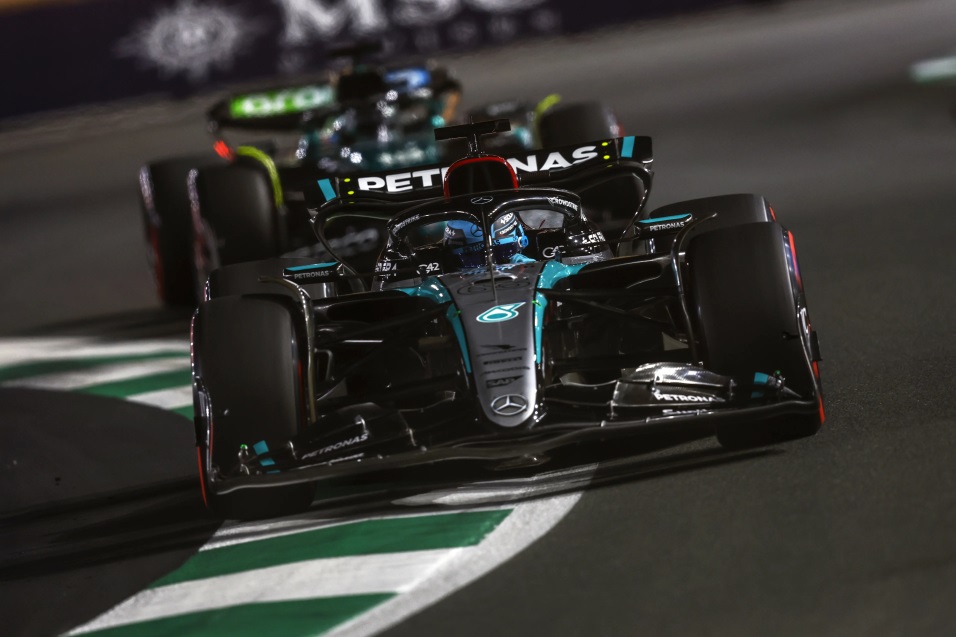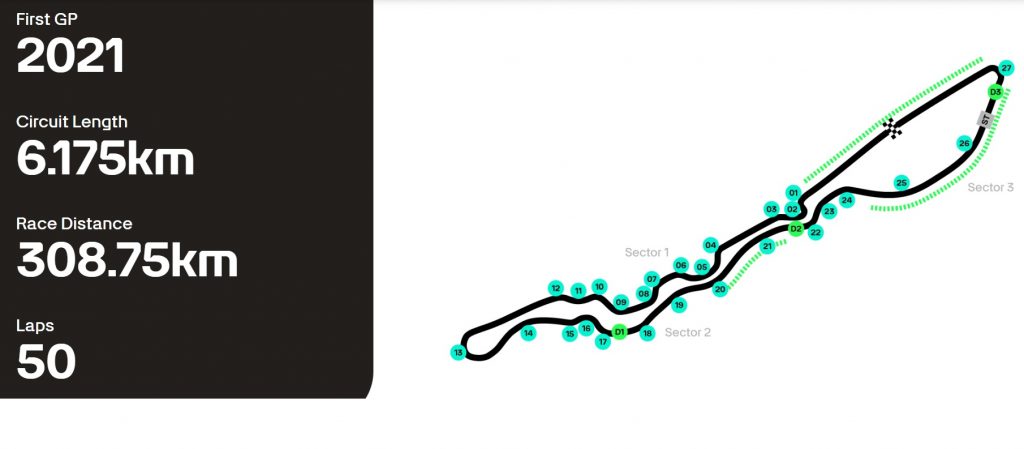Mercedes F1’s Challenges At The Saudi Arabian GP
Giancarlo Perlas March 9, 2024The Mercedes-AMG Petronas F1 Team faces a mixed bag of challenges and opportunities at the upcoming Saudi Arabian Grand Prix after its drivers qualified seventh and eighth for the race this Sunday. Besides the fact that George Russell and Lewis Hamilton will have to work harder to land a podium finish, the circuit of the Saudi Arabian GP is known for its high demand for precision.

The Saudi Arabian GP Track
The Jeddah Corniche circuit is uniquely positioned with the Red Sea against its backdrop. It was designed by Hermann Tilke in collaboration with F1 to offer an adrenaline-inducing layout while marking it as the second-longest street circuit in the sport just next to the Las Vegas GP.

With 50 laps possessing a staggering 27 corners each, the 6.175 km-long Jeddah circuit has the most twists and turns, which demand utmost precision and careful strategy from racers. However, it was Russell who has shown proficiency in dealing with its laps as he recorded an average speed of 240.459km/h at the same venue last year. Such pace only fell a bit below his performance at the iconic Monza circuit.
The Challenges that Await Mercedes F1
According to Mercedes F1, the upcoming race presents a meticulous balancing act for the W15. It necessitates quick flexibility and good timing for a track that’s lighter on downforce yet heavier on braking compared to Bahrain. With the natural track evolution expected to sweep away the initial dust and improve grip, coupled with softer tires provided by Pirelli due to the smoother surface, Mercedes’ strategists have their work cut out to optimize performance during the grueling 308.75 km race.
F1 holds within a global and culturally diverse calendar, demanding flexibility and adaptability from all teams, including Mercedes F1. Despite the array of hurdles, the team’s track record in Jeddah speaks to their acumen and ability to harness the strengths of their vehicle and driver lineup under pressure.
Achieving points with both drivers in every race since their debut on this circuit, the team has demonstrated resilience and strategic intelligence. Last season’s fourth- and fifth-place finishes for Russell and Hamilton, respectively, underscore their potential amidst the challenges this track presents.
The history of safety cars and two red flags in all three races held here also highlights the unpredictability and likelihood for disruption, requiring tactical prowess and rapid response to changing race dynamics as critical factors to claiming victory or securing valuable points at the Saudi Arabian GP.




